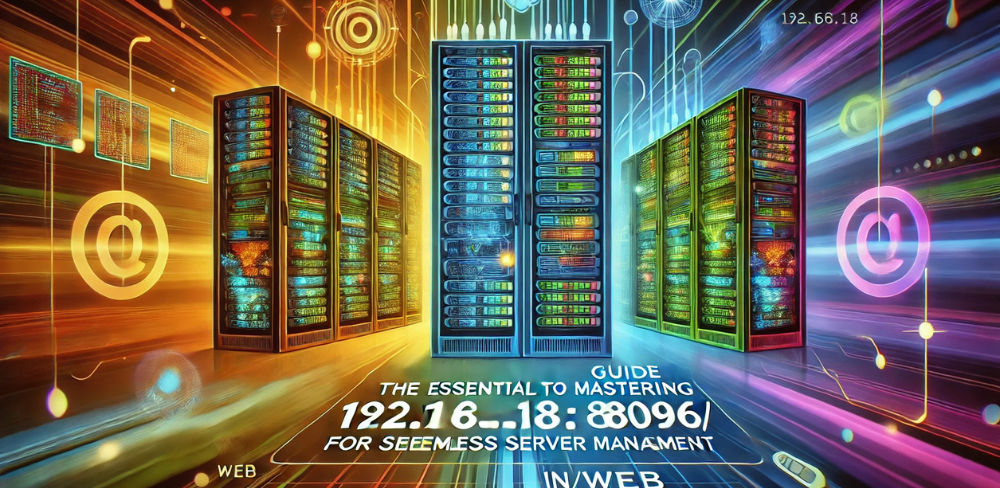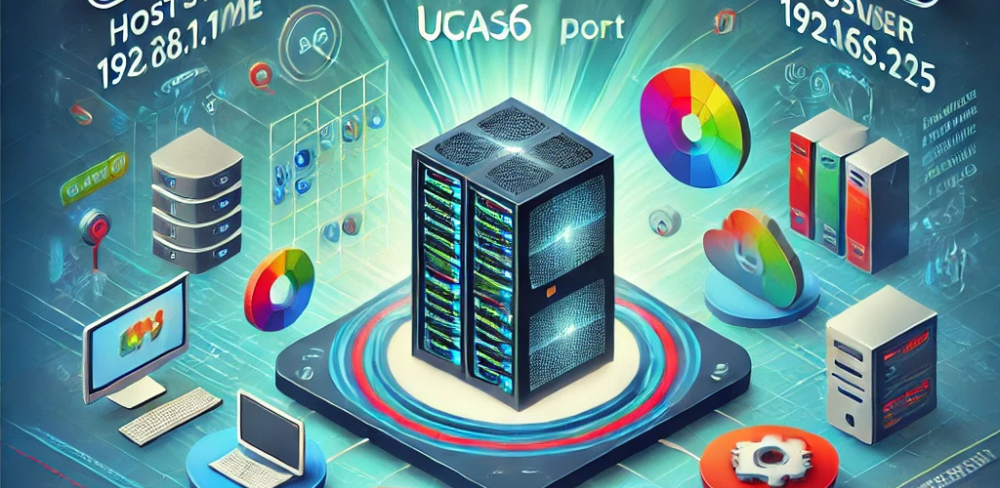192.168.3.18:8096/web/
In today’s world, managing a local web server efficiently is crucial for both businesses and individuals. 192.168.3.18:8096/web/ is an IP address and port combination often used to access local web-based interfaces, such as media servers or internal applications. Whether you are running Jellyfin, Emby, or testing development applications, understanding this web interface can greatly simplify your server management.
This guide will walk you through every step you need to master 192.168.3.18:8096/web/. From setting up your server, accessing the interface, resolving common problems, optimizing performance, and ensuring security, you’ll be equipped with everything you need for smooth operate.
1. What is 192.168.3.18:8096/web/?
The address 192.168.3.18:8096/web/ refers to a local IP address paired with port 8096. This IP is part of the private IP range used within local networks, typically in homes or small offices. Port 8096, often used by applications like Jellyfin and Emby, allows access to the web interface where users can manage settings, stream content, or monitor server performance.
Key Points:
- 192.168.3.18: This is an IP address in the local network (LAN) that only devices connected to the same router can access.
- Port 8096: This port is associated with applications like media servers that offer web-based management interfaces.
Together, 192.168.3.18:8096/web/ provides an interface for users to remotely manage services hosted on this IP, whether it’s for media streaming or other server management tasks. This makes it an essential tool for administrators and hobbyists alike.
2. How to Access 192.168.3.18:8096/web/
Accessing 192.168.3.18:8096/web/ is a straightforward process as long as you are connected to the same local network as the server. Here’s how to do it step by step:
Step 1: Ensure Network Connection
Make sure your device is connected to the same Wi-Fi or LAN network as the server hosting 192.168.3.18.
Step 2: Open a Browser
You can use any popular web browser such as Google Chrome, Mozilla Firefox, or Safari. Simply open a new tab or window.
Step 3: Enter the IP Address and Port
In the browser’s address bar, type in the full URL: 192.168.3.18:8096/web/ and hit Enter. This URL tells the browser to connect to the web interface hosted on port 8096 at 192.168.3.18.
Step 4: Login or Direct Access
If the service requires authentication, you will be prompted to enter your username and password. Some setups may allow direct access without login, depending on the security settings.
Troubleshooting Tip:
- If the page doesn’t load, check if the server is powered on and that your device is connected to the same network.
By following these steps, you’ll gain access to the web interface and be ready to manage your server.
3. Common Applications of 192.168.3.18:8096/web/
The IP and port combination 192.168.3.18:8096/web/ is most commonly associated with media servers and web-based management platforms. Below are some key applications where it is often used:
A. Media Servers
Popular media servers like Jellyfin, Emby, and Plex use IP addresses like 192.168.3.18 and ports such as 8096 to host a local web interface for managing media libraries. Users can:
- Organize video, music, and photo collections.
- Stream media to various devices across the network.
- Set up user profiles and parental controls.
B. Development Environments
Web developers often use local IP addresses like 192.168.3.18 to test applications before deploying them to a public server. These local setups:
- Provide an isolated environment for testing new features.
- Enable debugging without the risks associated with a live server.
- Allow developers to make real-time changes and see results instantly.
C. File Servers
Small businesses or home users may set up file servers using similar IP configurations. Accessing 192.168.3.18:8096/web/ would provide an interface for:
- Uploading and downloading files.
- Managing shared drives and access permissions.
Using 192.168.3.18:8096/web/ simplifies managing local servers for media streaming, development, and file sharing, making it a versatile tool in various environments.
4. Key Features of 192.168.3.18:8096/web/
The web interface available through 192.168.3.18:8096/web/ offers several powerful features to enhance user experience. Let’s look at the most important ones:
A. Remote Management
One of the standout features of this web interface is the ability to remotely manage the server. From adjusting settings to organizing files or monitoring activity, you can access the server from any device within the network, reducing the need for direct physical access.
B. User-Friendly Interface
Many services accessed via 192.168.3.18:8096/web/ offer a highly intuitive and user-friendly dashboard. Whether you’re managing media content on Jellyfin or tweaking development settings, the interface is designed to be navigable, even for less tech-savvy users.
C. Real-Time Monitoring
With access to 192.168.3.18:8096/web/, users can view real-time statistics of their server’s performance, including:
- CPU and memory usage.
- Network bandwidth consumption.
- Storage availability.
These monitoring tools help administrators optimize server performance and troubleshoot issues before they become problematic.
D. Security Controls
Many web-based platforms accessible via 192.168.3.18:8096/web/ come with built-in security features:
- Access control lists to limit who can view or change settings.
- Password protection for sensitive areas.
- Optional SSL encryption for added security.
These features help ensure that server management remains safe and secure, even on a local network.
5. Troubleshooting Common Access Issues
Although accessing 192.168.3.18:8096/web/ is typically easy, some users may encounter issues. Here are common problems and how to troubleshoot them:
A. Connection Timeout
If your browser times out while trying to access 192.168.3.18:8096/web/, it could be due to:
- The server not being powered on.
- Network interference or router misconfiguration.
- Incorrect IP address or port number.
Solution: Double-check your IP and port settings, ensure the server is running, and reboot your router if necessary.
B. Unable to Authenticate
If you are prompted for a login but cannot remember the credentials:
- Reset the password via the server’s admin panel, or contact the administrator.
- Ensure your caps lock is off and that you are entering the correct username and password.
C. Firewall Blocking Access
Your firewall might be blocking port 8096, preventing you from accessing the web interface.
Solution: Ensure that your firewall allows inbound and outbound traffic on port 8096. You may need to adjust your router settings or server firewall rules.
6. Security Best Practices for 192.168.3.18:8096/web/
While 192.168.3.18:8096/web/ is used within a local network, security should still be a priority to prevent unauthorized access. Here are some best practices:
A. Strong Passwords and Authentication
Always use strong, unique passwords for any accounts that can access the web interface. If possible, enable two-factor authentication (2FA) for added security.
B. Firewall and Router Security
Ensure that your router’s firewall is properly configured to block unwanted traffic. Additionally, restrict access to 192.168.3.18:8096/web/ to only trusted devices within the local network.
C. Use HTTPS
For extra security, especially when transmitting sensitive data, enable SSL certificates to access 192.168.3.18:8096/web/ over HTTPS. This encrypts the data exchanged between the server and client, preventing potential interception.
D. Regular Software Updates
Keep both the server software and any web applications updated to the latest versions. Developers often release patches that fix security vulnerabilities and bugs, so staying current is essential for secure operations.
7. Optimizing Your Web Server Setup for 192.168.3.18:8096/web/
To ensure smooth performance when accessing 192.168.3.18:8096/web/, optimizing your web server setup is essential. Here are some tips:
A. Regular Maintenance
Perform routine maintenance such as:
- Clearing cache and temporary files.
- Backing up important data.
- Deleting unused or old files to free up space.
B. Monitor Server Resources
Continuously monitor CPU, memory, and network usage to avoid overloading the server. Many interfaces include resource graphs to help you keep track.
C. Use Caching
If you’re managing a media server, enabling caching can significantly reduce load times, particularly when streaming or serving content to multiple devices.
D. Improve Network Speed
For faster access to 192.168.3.18:8096/web/, ensure your server is connected via Ethernet rather than Wi-Fi, and optimize your router settings for minimal latency.
8. Conclusion: Unlocking the Full Potential of 192.168.3.18:8096/web/
Mastering the use of 192.168.3.18:8096/web/ can significantly improve your ability to manage local web servers, media content, or development environments. By understanding the essentials of accessing, troubleshooting, and optimizing your server, you can ensure smooth operations and secure access.
Always remember to follow security best practices, perform regular maintenance, and monitor your server’s performance to get the most out of 192.168.3.18:8096/web/. Whether you’re running a media server or a development project, this IP and port combination offers a flexible and efficient solution for your web-based management needs.
Unlock the full potential of 192.168.3.18:8096/web/ and enjoy seamless server management, whether for personal or professional use.




